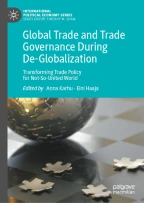
The spectacular spread of the Regional Trade Agreements (RTAs) over the world has become a distinctive feature of international trade. We underpin the setting up of an interconnected global RTAs network that could be considered a basis for the new global trading system, parallel to the existing multilateral framework, so great is the scope of agreements linking states from all regions. RTAs cover more than half of the international trade. The nature of modern RTAs has undergone a dramatic change too. RTAs have become more extensive and comprehensive, embracing new disciplines that are not fully covered within the WTO, for instance environment, e-trade, human rights, SDGs, and others. At the same time, during the crises, a trend for the increased fragmentation of the global order is also mounting. RTAs could both represent a new form of protectionism, or provide a chance for trade liberalization. A hope for a breakthrough in global trade regulation depends more than ever on the RTAs and on the character of cooperation between the states participating in these agreements. For business and governmental policy-making, taking into account the legal arrangements within the RTAs networks becomes an imperative.
This is a preview of subscription content, log in via an institution to check access.
eBook EUR 85.59 Price includes VAT (France)
Softcover Book EUR 105.49 Price includes VAT (France)
Hardcover Book EUR 105.49 Price includes VAT (France)
Tax calculation will be finalised at checkout
Purchases are for personal use only